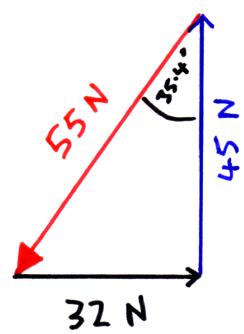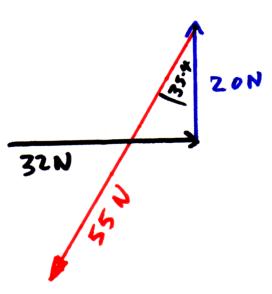An object is in equilibrium if ;
- The resultant force acting on the object is zero.
- The sum of the moments acting on an object must be zero.
Triangle of forces
When an object is in equilibrium the forces acting on it will form a closed triangle.
Example 1) A point (P) upon which all the forces are in equilibrium.

We take the three forces above and keeping the size and direction the same redraw them placing them head to tail with each other. If the forces are in equilibrium the head of the last forces will meet the tail of the first forming a closed triangle, see the example below.

Example 2) A point (P) upon which the forces are not in equilibrium.

When the forces above are laid head to tail the head of the last force does not meet back at the tail of the first and so these forces are not in equilibrium. See below.




